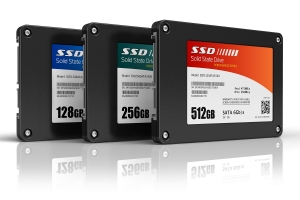How to Copy a Primary Harddrive- Copying Data to SSD Drive.Upgrading to a Solid-State Drive (SSD) can significantly improve your computer's performance, especially boot times and application load times. One of the most efficient ways to migrate your data to an SSD is by cloning your primary hard drive. This process involves creating an exact copy of your hard drive, including the operating system,
White Paper: Cloning a Hard Drive to an SSD: A Step-by-Step Guide
Introduction
Upgrading to a Solid-State Drive (SSD) can significantly improve your computer's performance, especially boot times and application load times. One of the most efficient ways to migrate your data to an SSD is by cloning your primary hard drive. This process involves creating an exact copy of your hard drive, including the operating system, applications, and user data.
Understanding the Process
Cloning a hard drive is essentially creating a duplicate of its contents. This is achieved using specialized software that reads the data from the source drive and writes it to the target SSD.
Required Tools:
• SSD: Ensure the SSD has sufficient capacity to accommodate your data.
• Cloning Software: Popular options include Acronis True Image, Macrium Reflect, and EaseUS Todo Backup.
• SATA or USB Cable: To connect the SSD to your computer.
Step-by-Step Guide:
1. Prepare the Target SSD:
◦ Ensure the SSD is formatted and partitioned correctly.
◦ The SSD should be larger than or equal to the size of the source drive.
2. Install Cloning Software:
◦ Download and install your chosen cloning software.
3. Clone the Drive:
◦ Launch the cloning software and follow the on-screen instructions.
◦ Select the source drive (your current hard drive) and the target SSD.
◦ Initiate the cloning process.
4. Boot from the Cloned SSD:
◦ After the cloning process is complete, you may need to adjust the boot order in your BIOS or UEFI settings to prioritize the SSD.
Additional Tips:
• Data Backup: Before starting the cloning process, create a backup of your important data.
• System Requirements: Ensure your computer meets the minimum system requirements for the cloning software.
• Power Outage Prevention: Avoid power outages during the cloning process, as it can corrupt the data.
• Patience: The cloning process can take some time, especially for large hard drives.
Common Challenges and Solutions:
• Insufficient SSD Space: If your SSD is smaller than your source drive, you may need to selectively transfer data or use compression techniques.
• Boot Issues: After cloning, you might encounter boot issues. Check your BIOS settings and ensure the SSD is set as the primary boot device.
• Driver Issues: In some cases, you may need to reinstall device drivers, especially for older hardware.
Conclusion
Cloning a hard drive to an SSD is a straightforward process that can significantly improve your computer's performance. By following these steps and considering potential challenges, you can successfully migrate your data and enjoy the benefits of SSD technology.
References:
• Acronis True Image: https://www.acronis.com/en-us/support/trueimage/2021/
• Macrium Reflect: https://www.macrium.com/reflectfree
• EaseUS Todo Backup: https://www.easeus.com/backup-software/tb-free.html
Remember to consult your specific software's documentation for detailed instructions and troubleshooting tips.
